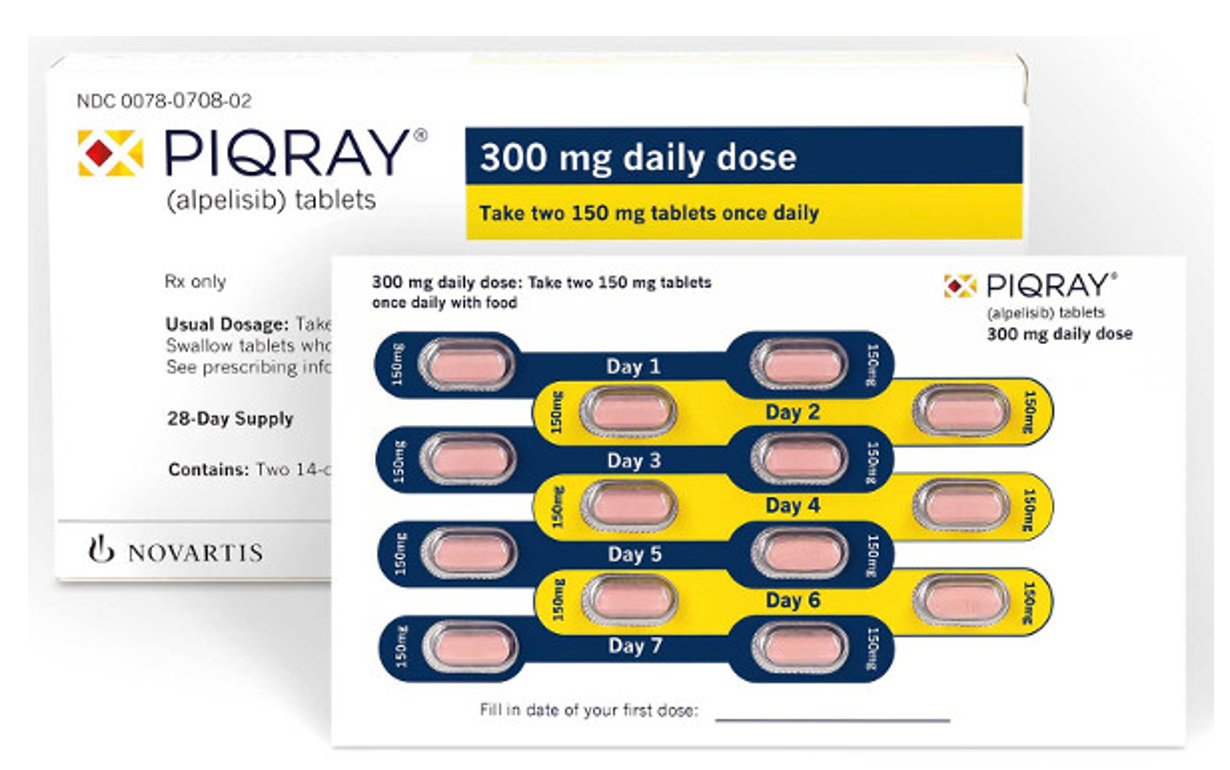Article
Daily Medication Pearl: Alpelisib (Piqray)
Author(s):
Key Takeaways
- Alpelisib is indicated for HR-positive, HER2-negative advanced breast cancer with PIK3CA mutations, used with fulvestrant.
- PIK3CA mutations are prevalent in 40% of HR-positive/HER2-negative breast cancer cases, linked to poor prognosis.
Piqray is indicated in combination with fulvestrant for the treatment of postmenopausal women, and men, with HR-positive/HER2-negative, PIK3CA-mutated, advanced or metastatic breast cancer, as detected by an FDA-approved test following progression on or after an endocrine-based regimen.
Medication Pearl of the Day: Alpelisib (Piqray)
Indication: Alpelisib (Piqray) is a kinase inhibitor indicated in combination with fulvestrant for the treatment of postmenopausal women, and men, with hormone receptor (HR)-positive, human epidermal growth factor receptor 2 (HER2)-negative advanced or metastatic breast cancer as detected by an FDA-approved test following progression on or after an endocrine-based regimen, with an abnormal phosphatidylinositol-3-kinase catalytic subunit alpha (PIK3CA) gene.
PIK3CA is the most commonly mutated gene in HR-positive/HER2-negative breast cancer and approximately 40% of patients with HR-positive/HER2-negative breast cancer have this mutation. PIK3CA mutations are associated with tumor growth, resistance to endocrine therapy, and a poor overall prognosis. Piqray targets the effect of PIK3CA mutations and may help to overcome endocrine resistance in HR-positive advanced breast cancer.

Insight:
- Dosing: The recommended dose of Piqray is 300 mg (2 150-mg film-coated tablets) taken orally, once daily, with food. When administered with Piqray, the recommended dose of fulvestrant is 500 mg administered as an injection by a physician on days 1, 15, and 29, and once monthly thereafter.
- Adverse events: Most common adverse reactions, including laboratory abnormalities (all grades, incidence ≥ 20%) were glucose increase, creatinine increase, diarrhea, rash, lymphocyte count decrease, gamma glutamyl transferase increase, nausea, alanine aminotransferase increase, fatigue, hemoglobin decrease, lipase increase, decreased appetite, stomatitis, vomiting, weight decreased, calcium decreased, glucose decrease, activated partial thromboplastin time prolonged, and alopecia.
- Mechanism of action: Alpelisib is an inhibitor of phosphatidylinositol-3-kinase (PI3K) with inhibitory activity predominantly against PI3Kα. Gain-of-function mutations in the gene encoding the catalytic α-subunit of PI3K (PIK3CA) lead to activation of PI3Kα and Akt-signaling, cellular transformation and the generation of tumors in in vitro and in vivo models.
- Manufacturer: Novartis
Source:






